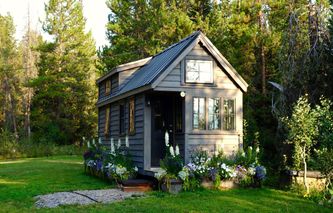According to the National Fire Protection Association (NFPA), 97% of the homes in North America have at least one smoke alarm. Ironically, the NFPA statistics also state there are more homes with smoke alarms that are not working, than homes without alarms.
Living Safely in New Homes
Smoke alarms protect both the home and loved ones in the event of a fire. When buying a new home, the home inspection should highlight the presence, and condition, of smoke alarms. Given the information provided by the NFPA, recent buyers need to make sure the smoke alarms are functioning properly.
Additional Resources |
While a homeowners insurance policy will cover the expense of restoring a home if it's damaged, nothing can bring back those memories lost to a fire. In addition, most insurance companies will offer policyholders a discount on their premiums just for installing fire safety equipment. This includes both smoke alarms and carbon monoxide detectors. So not only do these devices protect loved ones and valuables, it also pays to be safe.
Smoke Alarms
Thirty years ago, it might have cost $1,000 to have smoke alarms professionally installed in a typical three bedroom home. Today, it's possible to find smoke detectors that can be easily installed by a homeowner for under $20 per unit. That means it's possible to protect loved ones, as well as the investment in the home, for less than $100.
Placement
While it's certainly important that a home have smoke alarms, the location of these devices is important too. Homeowners should make sure there is at least one smoke alarm installed on every level of the home, including the basement. Depending on the size of the home, consider installing an alarm both outside and inside sleeping areas.
Since smoke and most gases rise when heated, detectors should be installed on the ceiling or approximately 6 to 8 inches below the ceiling. Carefully read all the instructions that come with the smoke detector, and follow the manufacturer's recommendations for installing the device.
Testing and Replacing
Unless the smoke alarm has a 10 year lithium ion battery, it needs to be replaced once a year. Pick a holiday or birthday as a reminder it's time to replace the battery. Many times the change from Daylight Savings Time is used as a reminder to change smoke alarm batteries in the United States. While all smoke alarms will start to make a chirping sound when the battery is low, it's better to replace them on a schedule.
Dust can often interfere with the operation of a smoke detector, so it's important to make sure they stay clean. Simply vacuuming around and over the alarm will help keep the dust away from the detector.
Test the device monthly to make sure it's working properly. Most alarms have a red test button on the outside cover. The monthly test is as simple as pushing the button until the alarm sounds.
According to the National Fire Protection Association, most smoke alarms are made to last about 10 years, after which the entire device should be replaced. Again, consult the manufacturer's recommendation for the testing and replacement of a specific unit.
Battery Powered, Wired and Wireless Detectors
Typically, newer homes will have smoke detectors that are hard wired, meaning the battery only powers the device during a power outage. These hard wired alarms can oftentimes talk to each other, meaning if one alarm goes off, so will the others in the home.
Older homes are normally retrofitted with battery powered units, which sound locally. Manufacturers now offer wireless smoke detectors. These devices enable battery powered units to talk to each other wirelessly. If the unit in the basement detects smoke, the units located throughout the home will alarm too.
On average, family members have three minutes to exit the home safely once an alarm sounds. The added cost of a wireless unit is well work the investment.
Fire Extinguishers
There are three classes of fire extinguishers on the market today that can be safely used in a house or home. Each class of fire extinguisher serves a different purpose. The classification in the United States as published by the National Fire Protection Association is:
Class A: Extinguishers used for putting out fires of general combustibles such as wood or paper. These units usually contain a mixture of water and compressed gas. The symbol found on this type of extinguisher is a triangle around the letter A.
Class B: Extinguishers intended to be used on liquids or grease. The symbol found on this type of extinguisher is a square around the letter B.
Class C: Extinguishers used on electrical fires. This mixture is non-conducting to ensure the user is not harmed by electricity. The symbol found on this type of extinguisher is a circle around the letter C.
A general purpose device such as a class ABC extinguisher is a good choice for individuals looking for a single firefighting device for their home. Always make sure an escape route is clear and the fire department has been called before attempting to extinguish any fire; no matter how small.
Escape Routes
Work with family members to plan, and practice, escape routes; especially after buying a new home. Always have at least two means of egress from every room. In some instances, a safety ladder may be required to evacuate from a second floor room or bedroom in the home.
Family members should also agree on a meeting place outside the home where everyone can get together after they escape. Finally, don't forget to practice a fire escape route with the entire family, and remember: Once the home is evacuated, never return to a burning building.
About the Author - Fire Safety Practices in New Homes



